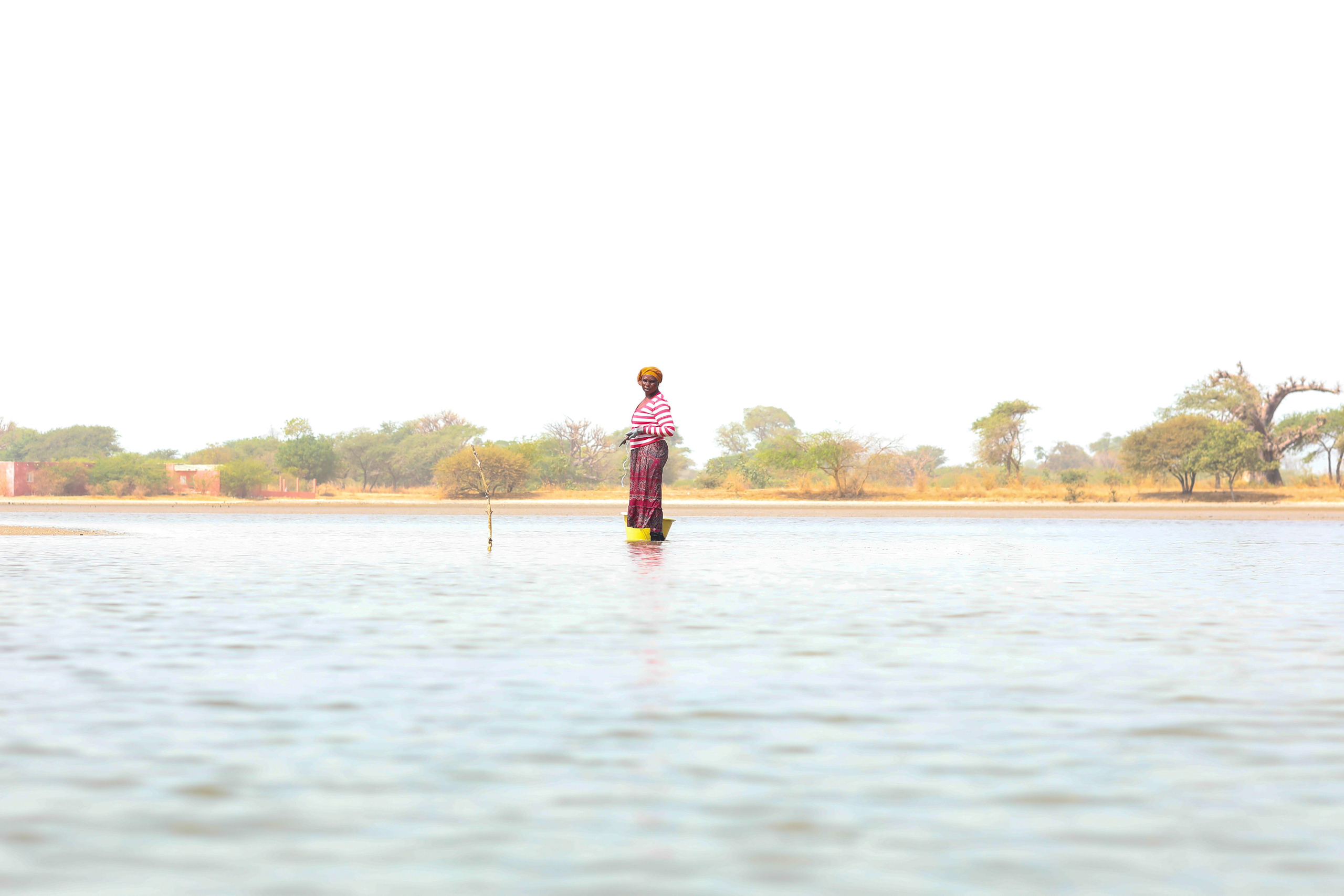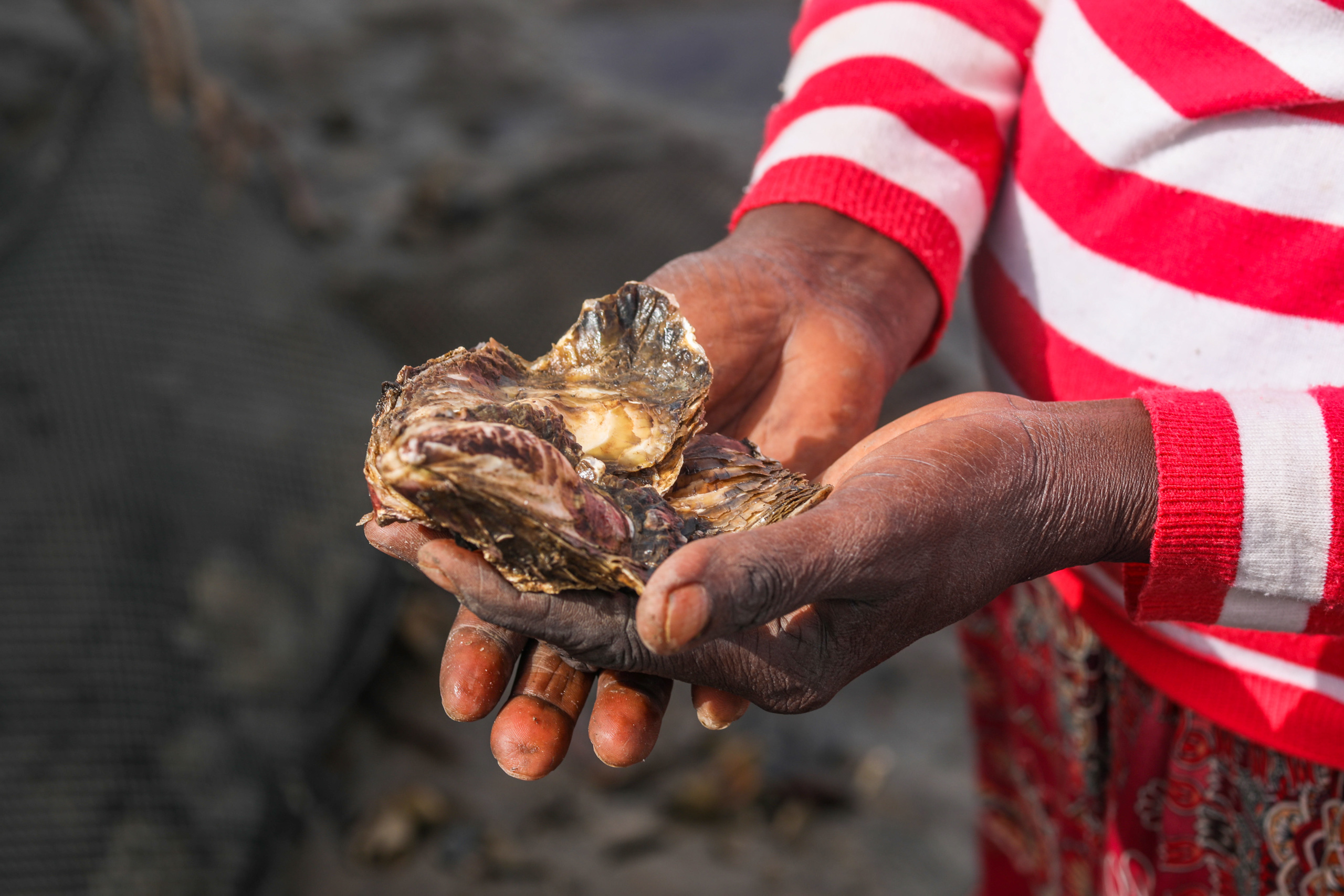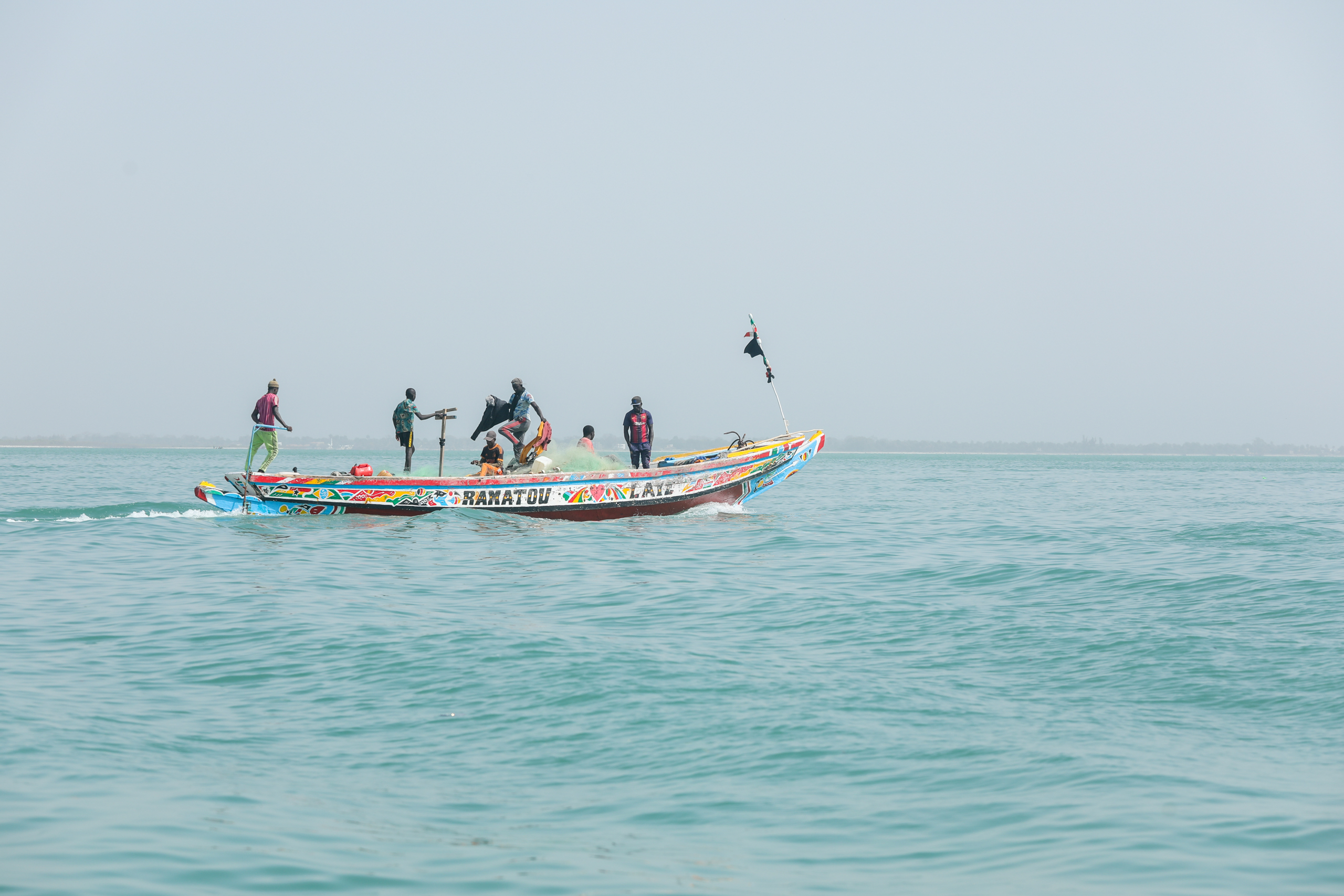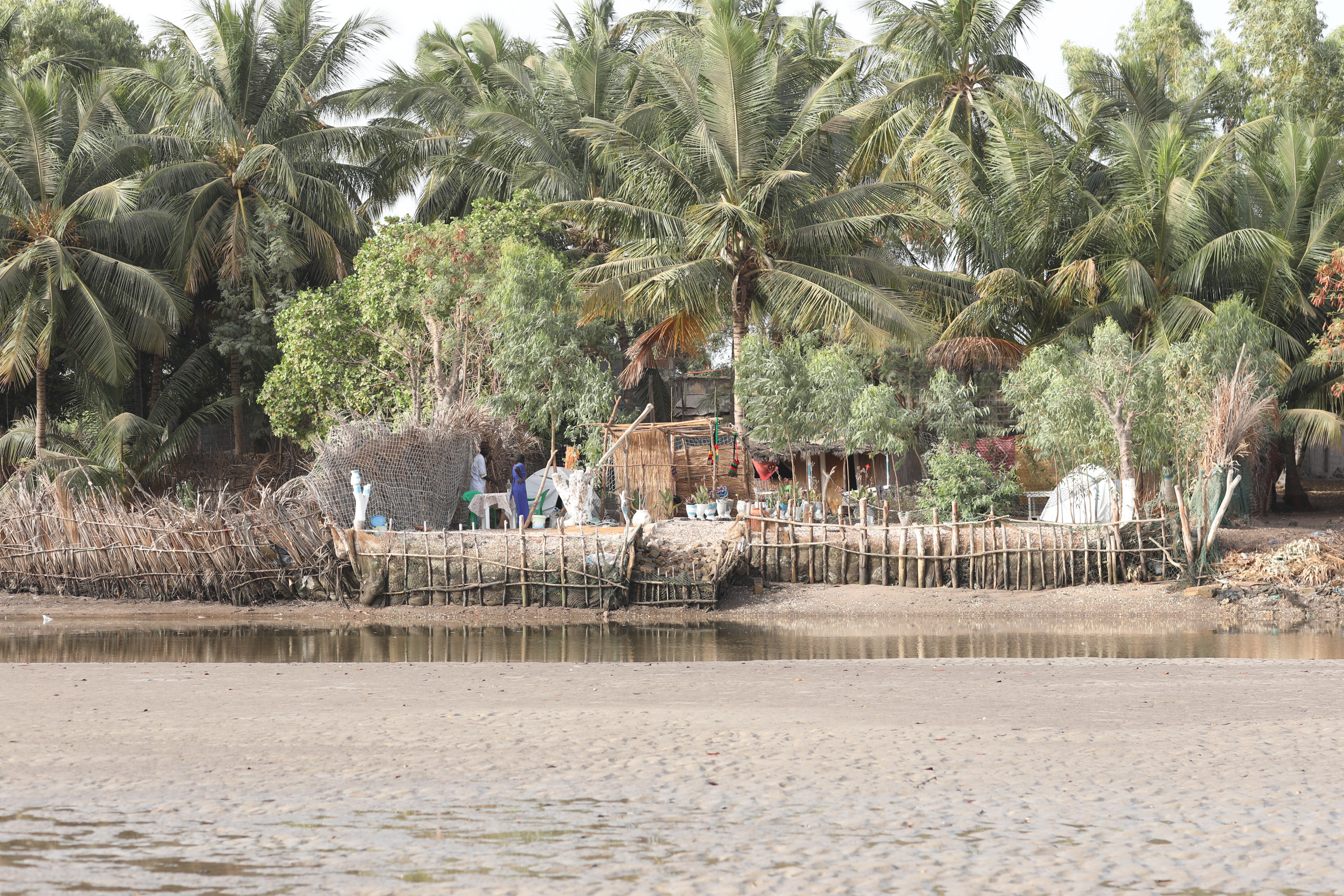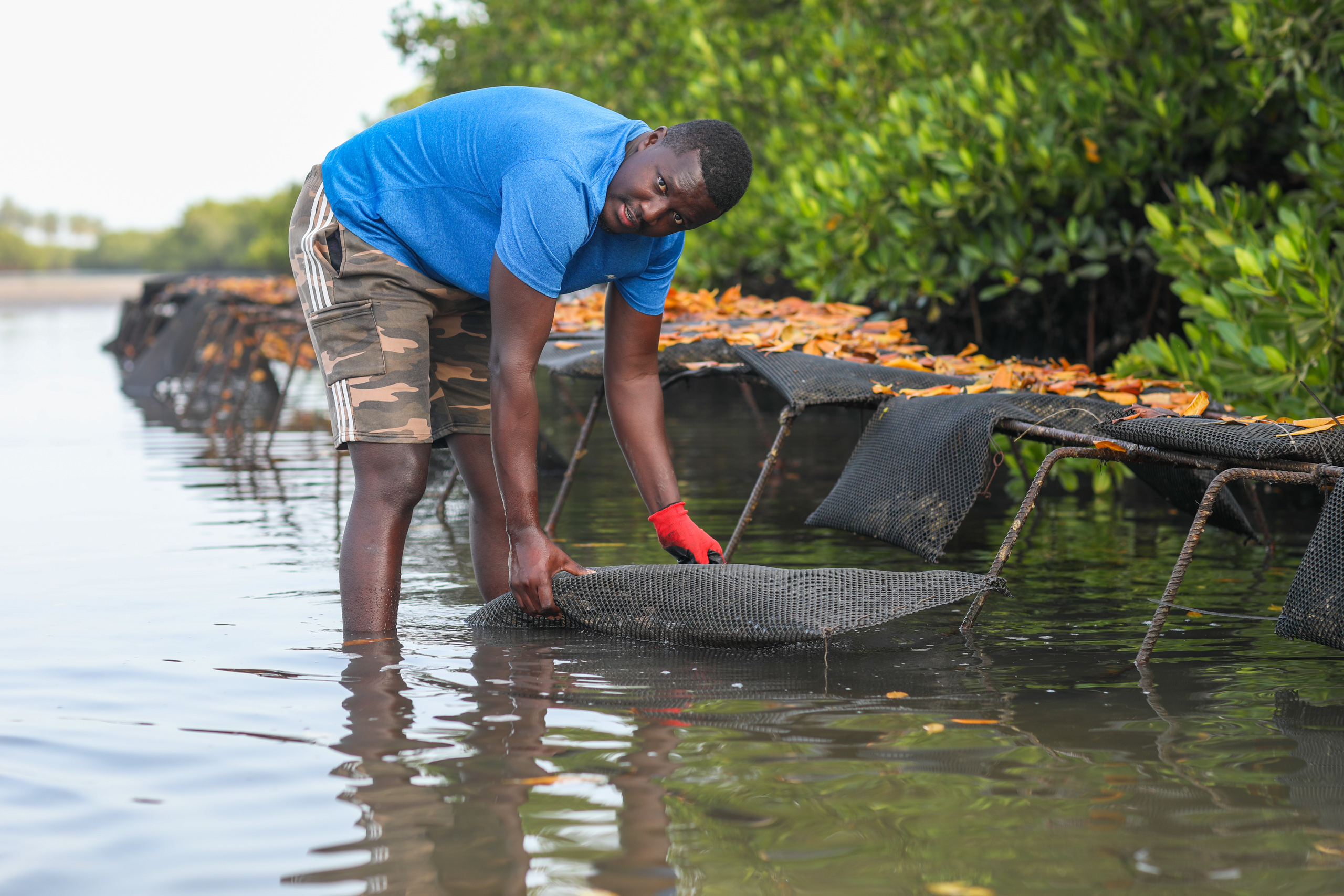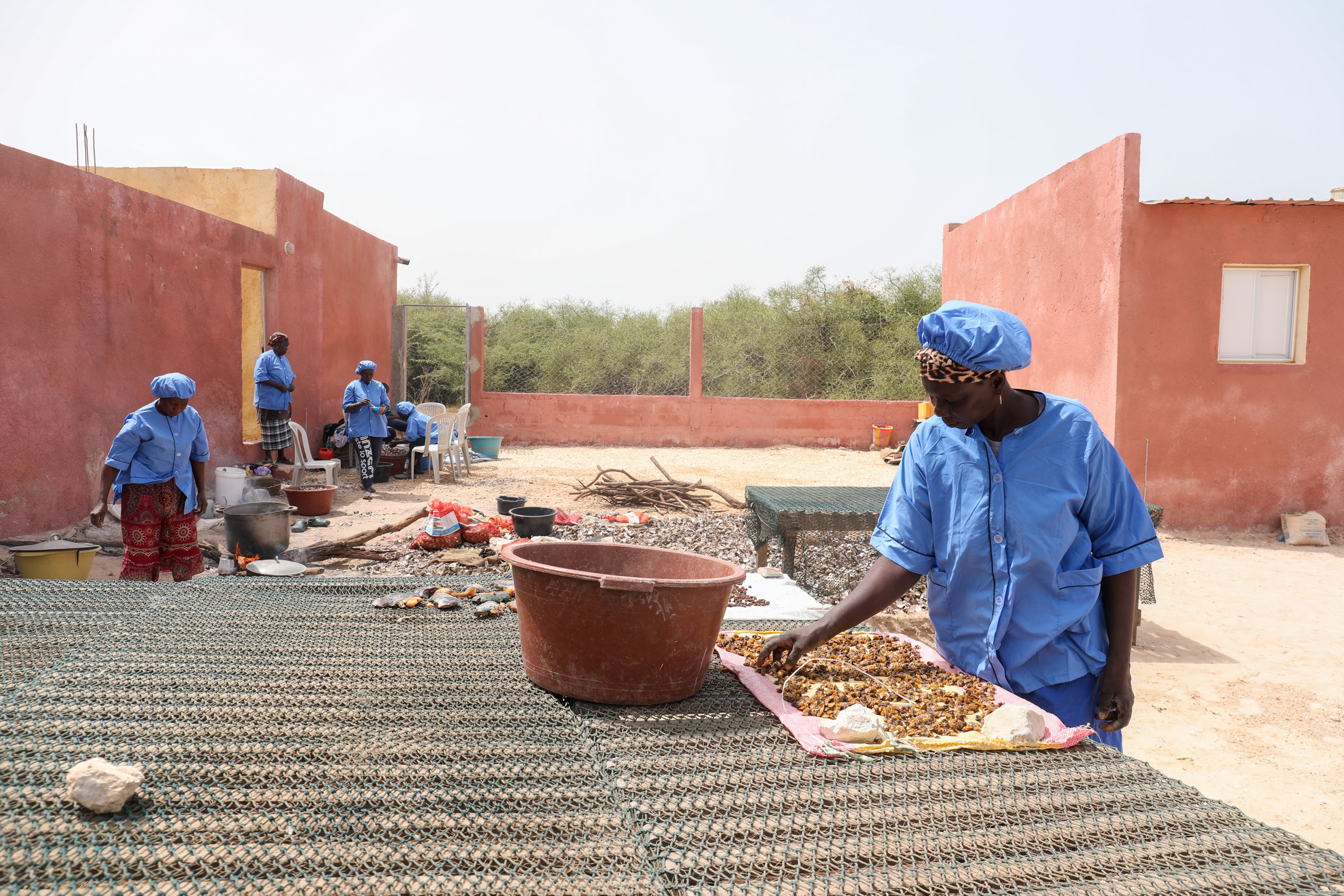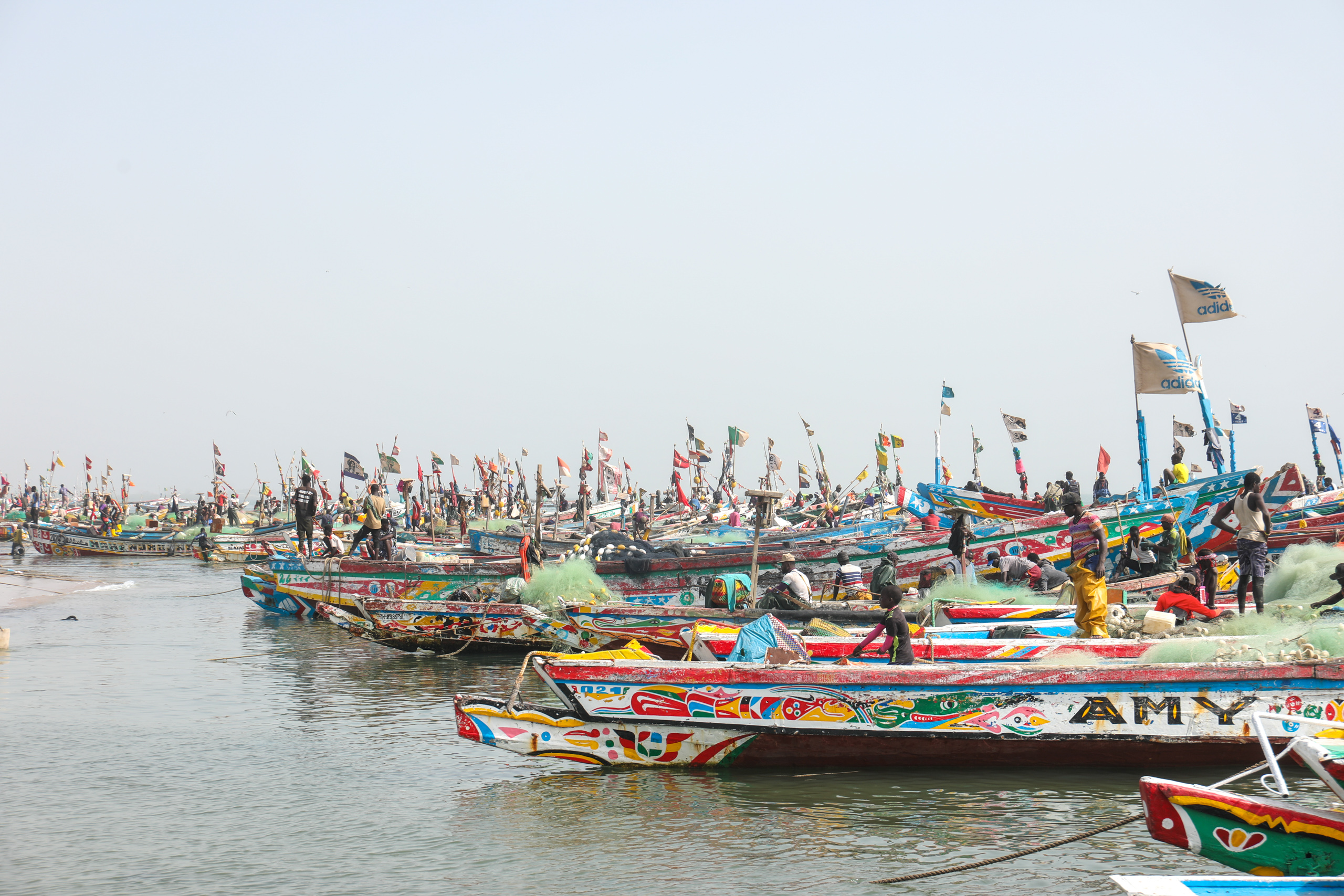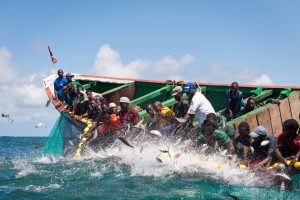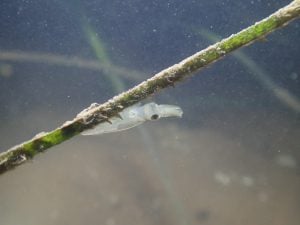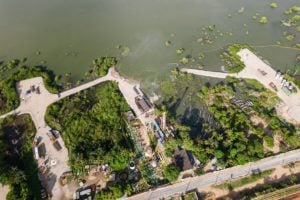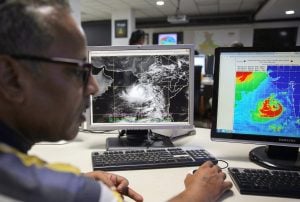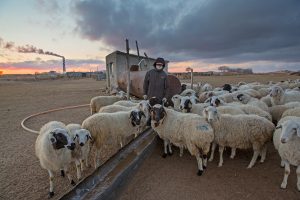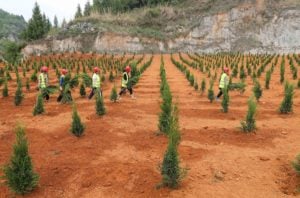Editor’s note: Ocean acidification is a global crisis. From West Africa’s Atlantic shores to the Pacific coast of North America, this manifestation of climate change is already doing alarming damage to shellfish that support local people. In this two-article series, Dialogue Earth explores the stories of two very different regions battling the same problem. Read part 2, about lessons from the US experience, here.
Fatou Sarr is 61. She has been foraging for oysters, cockles and shrimps in Senegal’s Saloum Delta since she was a young girl, walking among the mangroves during low tides, and taking a boat when they are high.
“We do this work to feed our families, pay the tuition of our children, pay their medical bills and other necessities,” Fatou tells Dialogue Earth.
After decades living and working in the Niodior area of the delta, Fatou believes that Senegal’s harvesters are now seeing the impact of ocean acidification, which impedes shellfish growth and survival.
“I started seeing the decrease of oysters some three years ago. This poses a big threat to the future of our livelihoods,” says Fatou.
The Saloum Delta covers over 700 square kilometres – more than half of Senegal’s network of mangrove forests. Together, these habitats support over 5,000 shellfish harvesters, 80% of whom are women, according to a 2021 study by USAID (the US Agency for International Development).
Oysters, shrimps, and ‘bloody cockles’, also known as arches, bring food and money directly to around 60,000 households in the country, according to the study. The shellfish are also exported around the world, contributing to Senegal’s economy.
However, ocean acidification driven by climate change is eroding this vital harvest.
Sarr has been taught about climate change and its impacts in various workshops. Now she sees in her daily life the shifts that were warned of in those talks.
“A few years ago, I could harvest three bags of oysters from the sea in a day. Now, I struggle to get one,” she tells Dialogue Earth.
It is not just oysters that are not what they were. Women shellfish harvesters in rural coastal communities of Niodior, and up the coast in Palmarin, say they are also seeing dwindling harvests and quality in arches, shrimps and other seafood.
Shellfish in decline as acidity increases
When seawater absorbs atmospheric carbon dioxide, carbonic acid is formed. As levels of this acid increase, the amount of available carbonate in the ocean falls. Carbonate is a critical building block in the calcium carbonate matrix that animals such as oysters and clams use to construct their shells.
If carbonic acid levels rise too high, the change in acidity can even directly erode existing shells. It can also disturb the development and survival of young shellfish, and cause them to spend energy on shell-building that they could otherwise use for feeding or reproducing.
The global scale of anthropogenic warming makes this a problem everywhere. But in places such as West Africa, the problem may be worse due to upwelling.
The West African Canary Current is one of four eastern upwelling systems that occur on the eastern margins of the world’s oceans – where deeper waters rise up and create a band of cold water along the coast.
This cold water, rich in organic matter accumulated in the depths, supports a wealth of life when it reaches the surface.
“That’s why they’re such productive areas, with such rich fisheries. But it also makes them more vulnerable to ocean acidification,” says Nicholas Hardman-Mountford, head of oceans and natural resources at the Commonwealth Secretariat.
These waters are already relatively high in carbon, and the complexities of ocean chemistry mean they may be easily pushed towards acidity as atmospheric carbon infuses with them.
Climate change can also increase ocean temperatures and lower oxygen levels. These levels are already lower in ocean upwelling systems, because the upwelled water has had less exposure to air at the surface.
Hope in oyster farming
Fatou Ndong-Sarr is president of the Singhiyame Niodior Transformation Unit, a Canadian-funded project supporting women harvesters. Singhiyame means ‘self-sustenance’ in the Serer language. (Sarr is a common surname in the region; those quoted in this story are not related.)
She told Dialogue Earth how a method introduced by researchers from Cégep de la Gaspésie et des Îles, an educational institution in Quebec, Canada has been a huge success in Niodior.
Traditionally, oysters are left to grow naturally in mangroves and then laboriously harvested with knives when mature. Now those involved in the project pick young oysters, put them on platforms by the mangroves, and carefully tend to them until they can be sold.
In addition, rather than simply selling mature oysters, local people now wash, boil or smoke them, then package and sell them to regional and international markets.
“We found our grandparents doing this work but now we are using the new strategies,” says Ndong-Sarr. “The Transformation Unit … is where we do the processing of the oysters after harvest, including packaging and marketing. That was only a dream before.” However, she adds: “All these advancements are now threatened by the impact of ocean acidification.”
Climate change is one of their biggest concerns says Clemencia Ndene, the president of the Fishery and Forestry Products Processing Unit of the Community of Palmarin. This shellfish-processing centre for women is supported by NGO the Institute for Development Cooperation in Africa (ICD Afrique).
“We have noticed with concern that the quality of the oysters has reduced significantly due to [ocean acidification]… We all know that climate change is the main contributing factor for the reduction in quality and quantity of shellfish we deal with here,” she says.
A problem of monitoring
Despite these many challenges, Senegalese fishers have no way to detect what threats could be heading their way. Sophisticated sensors to measure ocean acidification, warming, and deoxygenation can be mounted on buoys and placed at sea, but they are expensive.
“We’ve been trying for almost 10 years now, but there is no buoy along the West African coast, from Nigeria to Morocco,” says Eric Machu, a researcher in the Laboratory for Ocean Physics and Remote Sensing at the French National Research Institute for Sustainable Development, who for several years led a research group on coastal upwellings in Senegal.
This lack of data leaves governments and fishers unable to respond to changing conditions.
“There is no adaptation if you’re blind,” says Todd Capson, a research associate of the Paris Institute of Planetary Physics (IPGP), University of Paris, where he has worked to understand and address the impacts of climate change on West African seas. Capson has been vocal in calling for more monitoring of these waters.
While researchers struggle to measure what is going on, some on Senegal’s coasts are already blaming climate change.
“It is true that some sea creatures have started disappearing; they could not withstand the acidification. It has also reduced the growth rate of oysters, and this is affecting our market.” Ndong-Sarr tells Dialogue Earth.
She has learned about climate change in workshops and capacity-building training, and knows how it may impact her livelihood.
“I have not gone to the university but I attended so many sessions and I know that an increased acidity in the ocean can affect the growth of these creatures. So when this continues to happen, they will disappear.”
